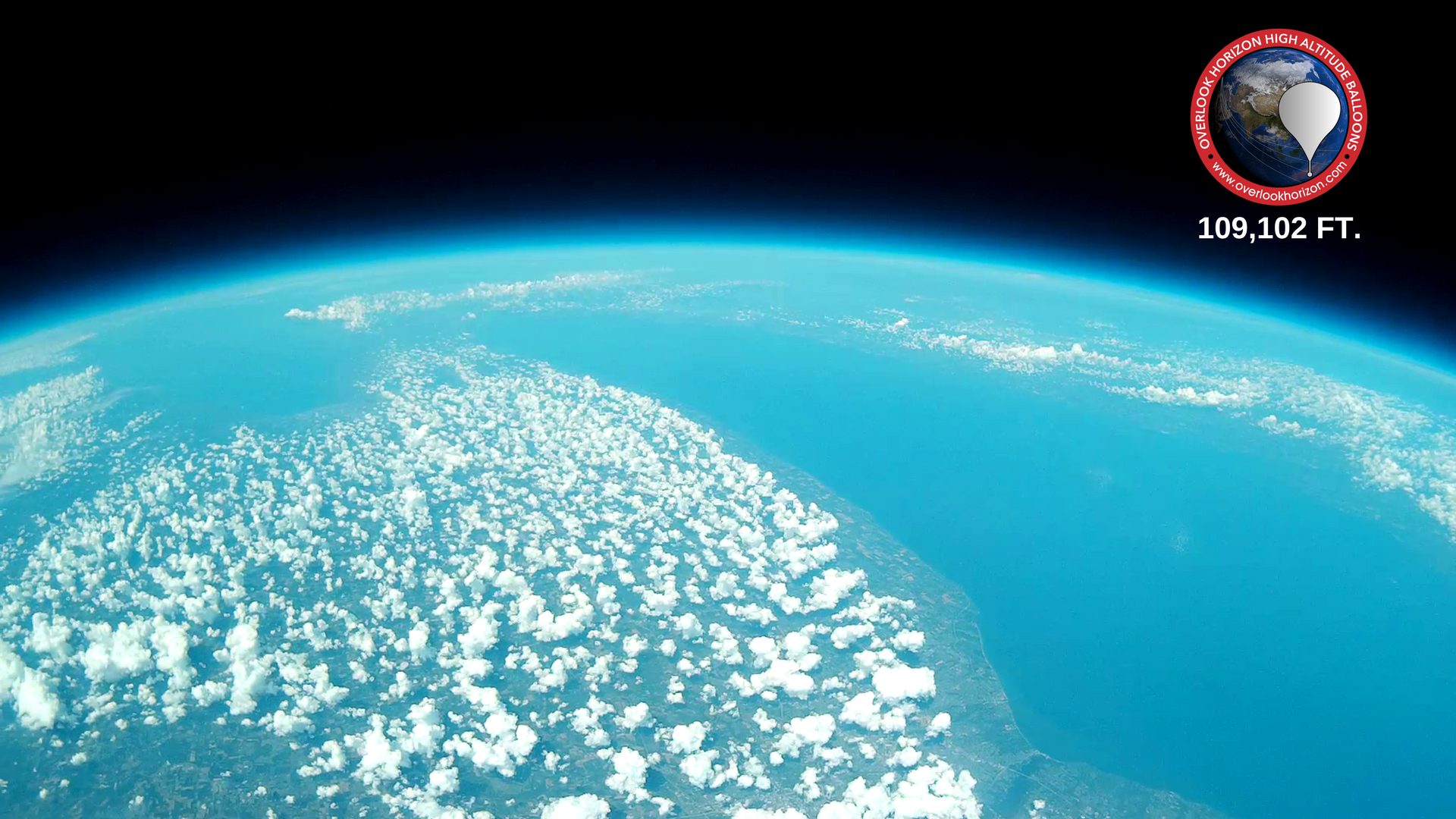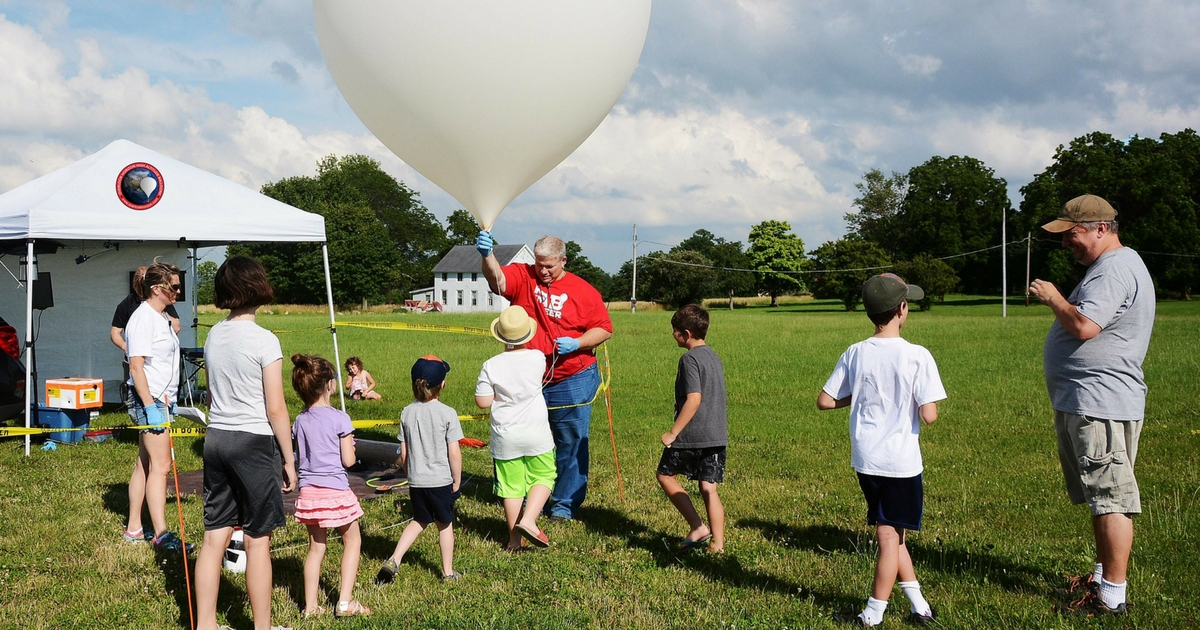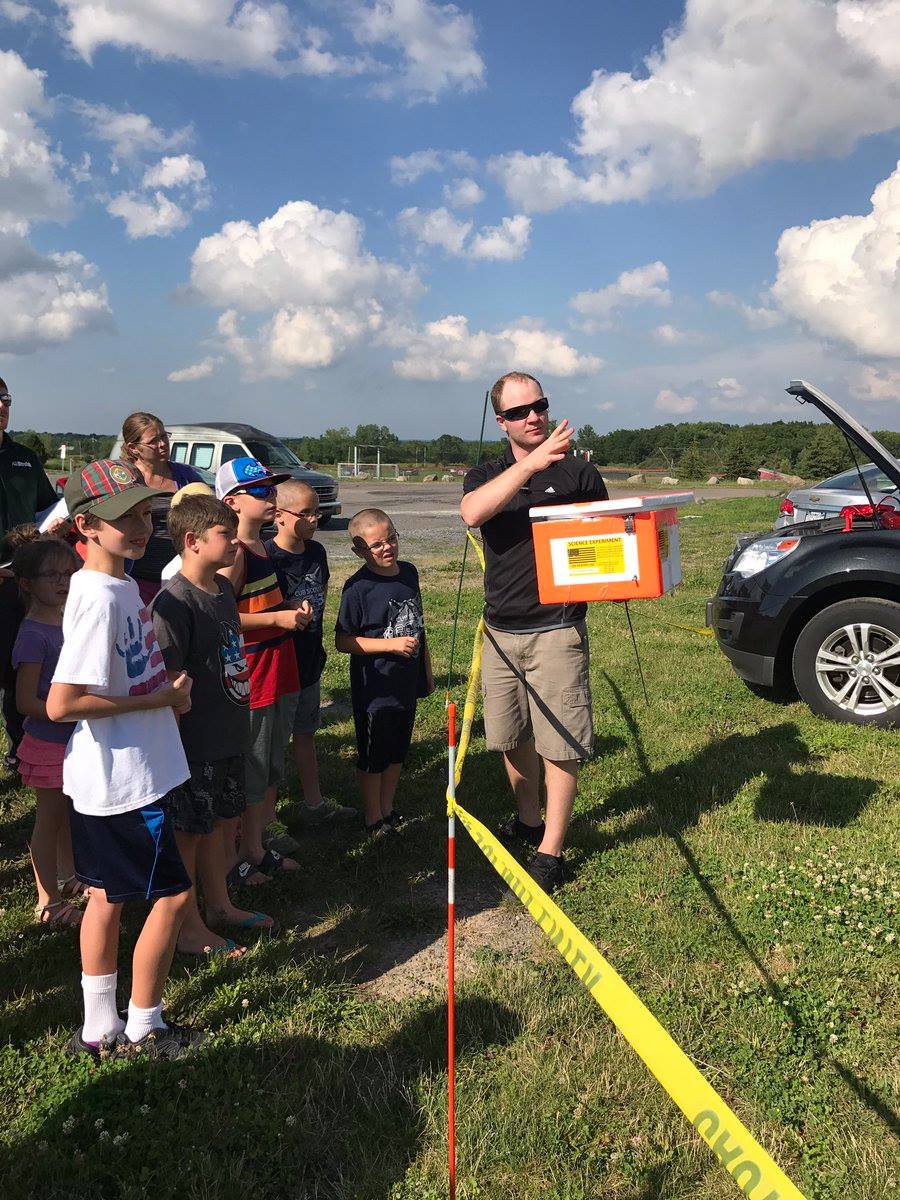Student Balloon Sat Program
High altitude balloons (weather balloons) are an amazing way for students and adults to learn about and practice concepts in nearly every area of science and technology: earth science, meteorology, physics, mathematics, biology, engineering, software & computing and much more! Since the process is so expansive in what it covers, it makes for a great opportunity for students to head out of the classroom and operate real-world experiments with the thrill of traveling to the edge of our planet while doing so. When compared to an actual space program, the cost of launching and flying your own high altitude weather balloon is incredibly inexpensive. Running your own private flight, though, comes with its own challenges. In addition to operating the student experiment you want to achieve, you’ll would also need to learn the process & regulations & flight tracking systems. The cost of a private flight can often be outside of the budgetary constraints that schools frequently face too. This is where our Student Balloon Sat program comes in! Balloon Sats (short for Balloon Satellites) are a way for students to quickly design an experiment and fly it on-board one of our scheduled flights at a relatively low cost. You can focus on designing the experiment and we’ll focus on the launch, tracking and recovery of that experiment using our flight-proven systems.
Starting your own Balloon Sat
The first step to sending your Balloon Sat on a flight is to contact us and let us know that you wish to participate in the Balloon Sat program. If a class or other group is involved please give us a single contact person to represent all the students/experimenters.
Balloon Sats cost $1.00 USD per gram. To be scheduled to a flight, a $20 deposit is required to reserve your spot. Once the deposit has been received, your spot will be reserved on an upcoming scheduled Balloon Sat flight. We generally work to ensure that groups will have their Balloon Sat experiments flown together. Flights typically occur in the Spring starting in March or April, but can occur sooner if enough interest is available for a full flight. We typically schedule flights at least 60 days in advance. When your Balloon Sat experiment is manifested for a flight, you will receive an email mission briefing.
Each individual Balloon Sat experiment will be issued an ID number. You should write, stamp or label your experiment on the outside with this number. Make sure it’s permanent as well as heat, cold and water resistant.
No less than thirty (30) days prior to the flight, a description of the Balloon Sat Experiment must be sent to us. This description can range from a few simple sentences to a complex technical description depending on the complexity of the Balloon Sat experiment. Final experiments & payment must be received 15 days prior to the flight.
After the end of the flight the Balloon Sat experiments will be mailed back to you along with mission data collected from the flight sensors. The experiments can range from plant seeds to complete upper atmosphere labs with over a dozen sensors and a data logger. Balloon Sat experiments have been used for basic science inspiration and for class research.
Balloon Sat Experiment Restrictions
- No payloads can contain vertebrates.
- Anything that sticks out of a Balloon Sat experiment must be pre-approved
- No volatile chemicals
- No combustion
- 1800g maximum weight for experiment, carrier and mounting equipment
- Experiments over 450g must be pre-approved
- Any device that emits a radio signal must be pre-approved
- All electronic devices must not emit electromagnetic interference, particularly with GPS signals which are very sensitive to interference. You can download an Android app called “GPS Status & Toolbox” to test & monitor for possible electronic interference.
- No items may be dropped from an experiment.
- Must have a mounting point above and below experiment to attach to the payload train. Smaller experiments may utilize our Styrofoam carrier boxes or our mesh bag for things like ping pong balls or tennis balls. Contact us if you wish to use these as your carrier.
- All Balloon Sat experiments are subject to inspection
What is the cost?
Balloon Sats can be launched aboard one of our scheduled flights at a cost of $1.00 USD per gram. The average Balloon Sat is 85 grams, but they can be smaller or larger at your discretion. Most experiments are encased inside a ping pong ball, tennis ball or empty soda can, but nearly any design is acceptable if we can mount it to the flight payload. If you want to receive your payload back, you’ll also pay the cost of the return shipping. Additional services like Payload Assembly & Design, Camera Rentals, Weather Sensor Rentals and others are available too for additional fees.
Where’s the launch?
Our Balloon Sat flights are typically launched from the Finger Lakes Region in Upstate New York. Students do not need to be geographically located in our area, though. Experiments can be sent to us, launched, recovered, and sent back.
Sample Flight Video
The Environment at High Altitude
Your Balloon Sat experiment will typically ascend to somewhere between 90,000 FT. and 115,000 FT. At this altitude, your Balloon Sat experiment will be exposed to temperatures down to -70° F and pressure down to just 10 millibars. It can frequently experience speeds up to 150 mph and acceleration between 5 and 10 G’s when the balloon bursts. At peak altitude, near vacuum conditions exist. Cosmic rays will occasionally strike at 100,000 feet. The environment nearly simulates that found in space. The air pressure is only 1/100th of that at sea level. This near vacuum pressure and temperature has dramatic effects on materials. Your experiment may also encounter moisture while ascending and descending. It may also encounter water upon landing so you should try to make your experiment as water resistant as possible. The payload descent occurs rapidly from frigid temperatures down to much warmer temperatures. It is very common to see ice or condensation on surfaces upon landing.
Designing your Balloon Sat
Your Balloon Sat can take on numerous shapes and sizes, but we do have some recommendations, particularly when it comes to the carrier that will transport your experiment to the edge of space. There are four common containers that are used by Balloon Sat experiments: Ping Pong Balls, Tennis Balls and Soda/Pop Cans work great for smaller Balloon Sat projects. Small Styrofoam packaging coolers work well for larger projects, particularly ones that incorporate electronics. All of these containers have smooth edges and can easily be placed inside our carrier that is suspended below our balloon. Most Balloon Sat experiments will be flown with other Balloon Sat experiments and may be placed in very close proximity to other experiments. If you wish to have your experiment placed independently of others or if you’re using a Styrofoam cooler carrier, please contact us ahead of time. Generally, these experiments must provide their own mounting points above and payload the experiment to attach to the payload train.
Post-Flight
Balloon Sat experiments will be returned to you by mail. Detailed information about the flight will be included as well as any on-board sensor data we collected as part of our electronics package. Each participant will receive a certificate to show they traveled to the edge of space and most flights will also include photo and video footage of the flight from on-board cameras that we typically include on our flight package. We also typically record and provide video footage of the moment we open and recover the payload so you can see the condition of your experiment as we found it at the landing site. This moment is usually shown on our live flight day broadcasts as well, if there is sufficient mobile bandwidth at the landing site.
Experiment Risks
Balloon Sat experiments are often flown on research and development missions with experimental tracking systems. High altitude payloads will parachute safely back to Earth after reaching the top of the atmosphere, however, there are hazards that can be encountered, although they are rare. Entire payloads can be lost due to electronic interference, poor radio reception as well as failed or malfunctioning tracking systems. Entire payloads can also be lost due to a hazardous landing site such as power lines, tall trees, water/lakes, swamps or just a land owner that refuses access to their property. Nearly all payloads can be recovered, but it is not guaranteed. A lost payload doesn’t necessarily end the learning experience, though, and can be a valuable teaching tool on what can go wrong when engineering high altitude ballooning systems. If this occurs, we will “re-fly” a new Balloon Sat experiment for you, although we will not be responsible for reimbursing the costs associated with the lost or replicated Balloon Sat experiment.




